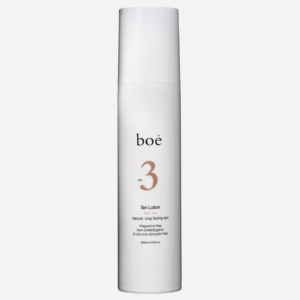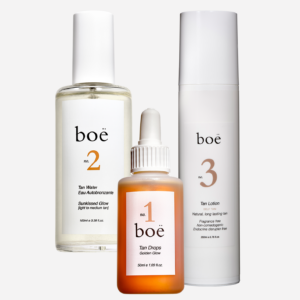If you’re looking to achieve a radiant, sun-kissed glow without exposing your skin to harmful UV rays, you’re not alone! As more research highlights the risks of sun exposure, self-tanners have become a go-to solution for many. The key ingredient in most self-tanners? Dihydroxyacetone, or DHA, a safe and effective compound that works wonders on your skin. Let’s dive into how DHA helps you achieve that natural tan glow and some tips for the best tanning results.
What is DHA in Self Tanners?
Dihydroxyacetone, commonly known as DHA, is a naturally derived ingredient, often sourced from sugar beets and sugar cane. This simple carbohydrate is approved by the U.S. Food and Drug Administration (FDA) as the only active ingredient for tanning the skin safely. When applied, DHA interacts with amino acids in the outer layer of your skin, creating a browning effect that mimics a natural tan—minus the sun damage! This reaction gives your skin a gorgeous glow that fades gradually, usually lasting between three to ten days.
The Fascinating History of DHA in Tanning
Interestingly, the tanning effects of DHA were discovered by accident. In the 1920s, German scientists noticed that DHA caused temporary browning when it came in contact with skin. This discovery resurfaced in the 1950s, when researcher Eva Wittgenstein at the University of Cincinnati was using DHA as an oral treatment. When spilled, the DHA again turned the skin brown—a finding that led to its development as a tanning ingredient. By the 1970s, the FDA had fully approved DHA for cosmetic use, and since then, DHA has remained the top choice for sunless tanning.
In the early days, DHA-based formulas often left a noticeable orange tint. However, advancements in the cosmetic industry have perfected these formulations, creating products like Boë Beauté’s No.2 Tan Water, which dries quickly, has a light consistency, and provides a golden glow in just a couple of hours!

How Does DHA Work in Self-Tanning?
DHA is the active ingredient in self-tanning lotions, sprays, drops, and mousses. Produced via microbial fermentation from simple sugars, DHA is non-toxic and safe to use on the skin. When applied, it causes a chemical reaction with the amino acids on the skin’s surface, known as the Maillard reaction, which gradually darkens the skin.
DHA concentrations vary by product. Gradual tanners, for instance, contain lower DHA levels, creating a softer glow over time. Higher concentrations, meanwhile, are used in products designed for a more immediate tan. Boë Beauté products specialize in gradual tanning, providing a buildable, natural-looking glow.
Addressing the “Self-Tanner Smell”
One of the main concerns some people have with DHA products is the smell that develops during the tanning process. Billie from Boë Beauté explains that this scent is simply a part of the tanning reaction and varies from person to person. Some say it even resembles the warm, beachy scent of sun-kissed skin. To minimize allergens, Boë Beauté keeps their products fragrance-free, so you can enjoy your glow without added fragrances or risk of skin irritation.
Is DHA Safe for Tanning?
Yes! DHA has been deemed a safe option for achieving a tan without the dangers associated with UV exposure. Self-tanners using DHA are far safer than sunbeds or prolonged sun exposure, both of which are linked to an increased risk of melanoma. According to the American Academy of Dermatology, using tanning beds before the age of 35 raises your melanoma risk by over 59%. For best results, remember that while DHA provides a tan, it doesn’t protect against UV rays. Always apply a broad-spectrum sunscreen (SPF 30 or higher) when outdoors to protect your skin.
Top Self-Tanning Tips for a Flawless Finish
To get the most out of your self-tanner and ensure a smooth, even application, follow these expert tips:
Exfoliate Before Application: Remove any dead skin cells with a gentle exfoliator or loofah. Pay extra attention to areas that tend to be drier, like elbows, knees, and ankles, to prevent uneven absorption.
Apply Self-Tanner in Sections: To avoid streaks and missed spots, apply the tanner in sections. Some people find it helpful to start with the torso and arms, then move to the legs, ensuring even coverage.
Adjust Around Joints: Dry areas like ankles and knees may absorb more product, which can make them appear darker. Lightly dab a damp cloth over these areas to prevent excess color buildup.
Follow Drying Instructions: Some tanners require a rinse, while others need time to dry. Check your product’s instructions to ensure you follow the proper drying method for the best results.
Embrace the Safe, Year-Round Glow with DHA Self-Tanners
DHA-based self-tanners are an easy, safe, and effective way to enjoy a sun-kissed glow all year round without putting your skin at risk. With the right preparation, application technique, and a good self-tanning product like Boë Beauté’s, you’ll achieve a beautiful, natural-looking tan that you can feel good about.
FAQs About DHA and Self-Tanning
- Does DHA damage the skin?
No, DHA is a non-toxic ingredient approved by the FDA for tanning use. However, avoid applying it near mucous membranes, such as the eyes and lips. - Can self-tanner replace sunscreen?
No, self-tanners do not provide UV protection. Always wear sunscreen when going outside. - How long does a DHA tan last?
Typically, a DHA tan lasts between three to ten days, depending on factors like skin type and care routine.
With these tips and insights, you’re all set to enjoy the benefits of DHA tanning safely and confidently. Say goodbye to harmful UV exposure and hello to a radiant, natural-looking glow!




